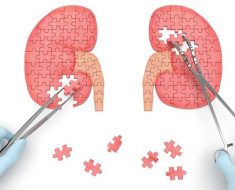The diversity of structures and functions of the brain is becoming increasingly realized in research today. Key structures exist in the brain that regulate emotion, anxiety, happiness, memory, and mobility. These structures can come in a huge variety of shapes and sizes and can all be physically near one another. Dysfunction of these structures and circuits linking them are common causes of many neurologic and neuropsychiatric diseases. For example, the substantia nigra is only a few millimeters in size yet is crucial for movement and coordination. Destruction of substantia nigra neurons is what causes motor symptoms in Parkinson’s disease.
New technologies such as optogenetics have allowed us to identify similar microstructures in the brain. However, these techniques rely on liquid infusions into the brain, which prepare the regions to be studied to respond to light. These infusions are done with large needles, which do not have the fine control to target specific regions. Clinical therapy has also lagged behind. New drug therapies aimed at treating these conditions are delivered orally, which results in drug distribution throughout the brain, or through large needle-cannulas, which do not have the fine control to accurately dose specific regions. As a result, patients of neurologic and psychiatric disorders frequently fail to respond to therapies due to poor drug delivery to diseased regions.
A new study addressing this problem has been published in Proceedings of the National Academy of Sciences. The lead author is Khalil Ramadi, a medical engineering and medical physics (MEMP) Ph.D. candidate in the Harvard-MIT Program in Health Sciences and Technology (HST). For this study, Khalil and his thesis advisor, Michael Cima, the David H. Koch Professor of Engineering within the Department of Materials Science and Engineering and the Koch Institute for Integrative Cancer Research, and associate dean of innovation in the School of Engineering, collaborated with Institute Professors Robert Langer and Ann Graybiel to tackle this issue.
The team developed tools to enable targeted delivery of nanoliters of drugs to deep brain structures through chronically implanted microprobes. They also developed nuclear imaging techniques using positron emission tomography (PET) to measure the volume of the brain region targeted with each infusion. “Drugs for disorders of the central nervous system are nonspecific and get distributed throughout the brain,” Cima says. “Our animal studies show that volume is a critical factor when delivering drugs to the brain, as important as the total dose delivered. Using microcannulas and microPET imaging, we can control the area of brain exposed to these drugs, improving targeting accuracy double time comparing to the traditional methods used today.”
Source: Read Full Article





